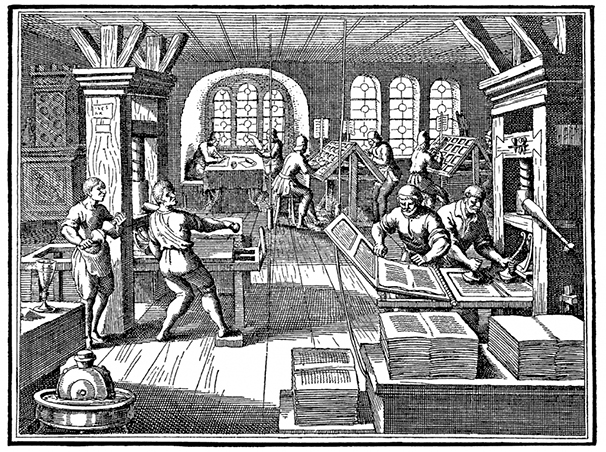The advent ofprinting began with Johannes Gutenberg, born around 1400.
In Strasbourg, Gutenberg began his studies as a goldsmith, then in chiseling and the adaptation of alloys, which led him to borrow money from his cousin Ardnol Gelthus to build a press and persuade a wealthy banker Johan Fust to help finance his project.
The first book he printed was the Bible, one of the few books with the potential for immediate success.
Gutenberg invented three techniques during this period:
– production of interchangeable metal type (essential technique in printing) – the hand press – printing ink (water-based at the time in printing)
The earliest prints were small impressions such as documents, poems and church letters.
(The oldest printing known today dates from October 22, 1454).
In 1454, the wealthy banker Fust, realizing that time was running out and that the printing task would take too long, added a further sum of money to enable the printing of Bibles to be accelerated.
It was thus printed in 641 leaves divided into 66 quires.
It is considered to be Gutenberg’s finest and most technically advanced work.
Between 1452 and 1455, this work was printed 185 more times.
Some impressions were printed on parchment.
It’s important to remember that in the Middle Ages, texts were not widely distributed, as many people were illiterate.
texts were handwritten by copyist monks and illustrations by specialized monks (actual printing was non-existent).
From the 1400s onwards, xylography made it possible to copy texts in multiple copies by engraving a text upside down on wood, then laying it down once it had been covered with ink on paper.
It was the beginning of a kind of printing.
Thanks to the invention of our first printer, Gutenberg, books are accessible to everyone, and much more quickly.
This led to a cultural revolution, sincelarge-scale printing led to the development of culture for all through the sharing of ideas, and thus to the birth of humanism with its critical spirit.
Indeed, thanks to this first printer, the fact that books were printed on a large scale meant that their acquisition was no longer restricted to a wealthy social class, but enabled a large proportion of the population to acquire these prints in the form of books, documents and poems, and to create their own personal libraries.
So we can see that through this innovation, the printing press, a staggering and little-known culture shock was born, thanks to this incredible industry:
– reinforces the effects of writing on thought and expression – birth of rebirth – awareness of one’s own interiority






